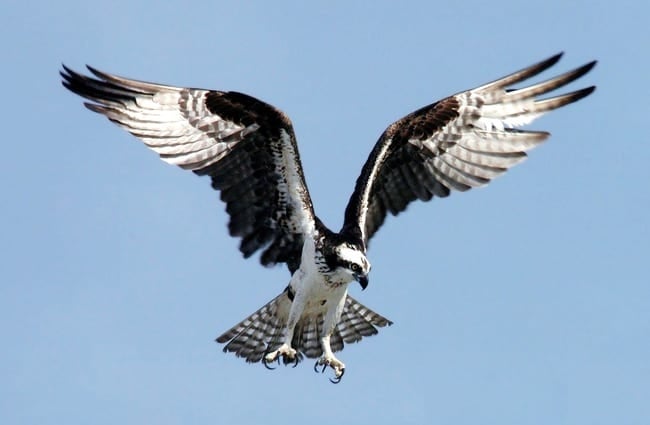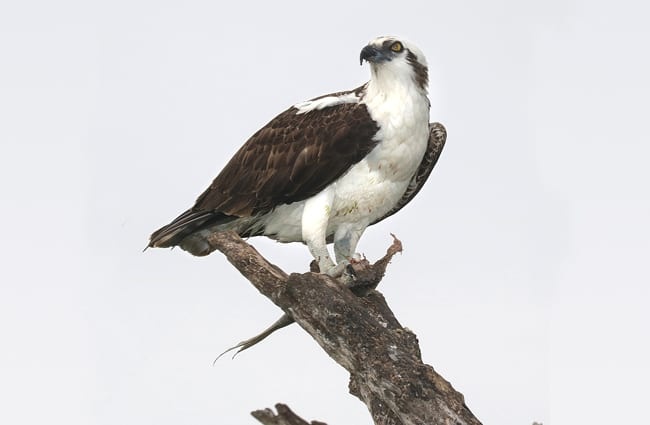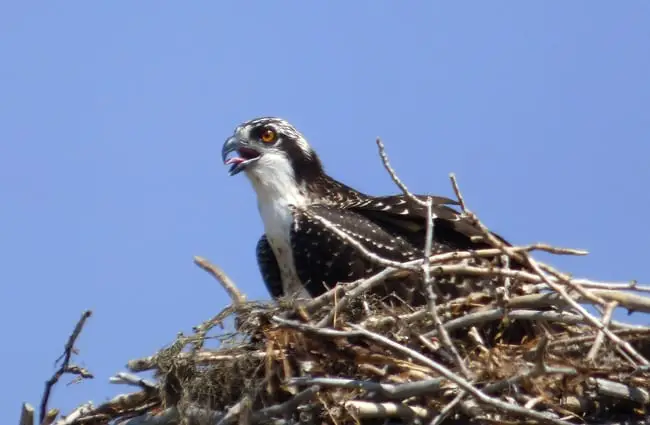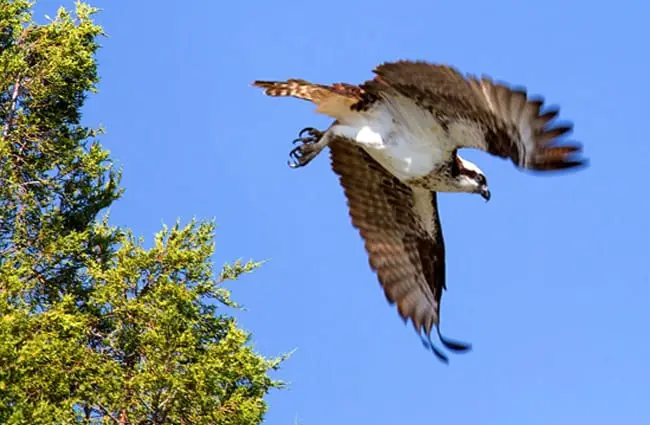The Osprey: A Global Angler of the Skies
Few sights in the natural world are as captivating as an Osprey, a magnificent raptor, plunging feet-first into water to snatch a fish. These specialized hunters are a testament to evolutionary brilliance, gracing nearly every continent with their presence. From their distinctive calls to their impressive aerial displays, Ospreys offer a window into the intricate dance of predator and prey, and the delicate balance of aquatic ecosystems.
This article delves into the fascinating world of the Osprey, exploring its life from a zoological perspective and offering insights for everyone from casual birdwatchers to dedicated researchers and conservationists.
Meet the Osprey: A Master Fisherman
The Osprey, scientifically known as Pandion haliaetus, is a large raptor, often mistaken for an eagle due to its size and powerful flight. However, its unique adaptations for fishing set it apart. With a wingspan that can reach up to six feet, a dark brown back, and a contrasting white underside, Ospreys are easily identifiable. A distinctive dark stripe runs through each eye, giving them a masked appearance, and their heads are predominantly white with a dark crown.
These birds are truly global citizens, found on every continent except Antarctica. Their presence is a strong indicator of healthy aquatic environments, as their survival is intrinsically linked to clean, fish-filled waters.

Where to Find These Aquatic Hunters
For the aspiring wildlife enthusiast or an animal lover hoping to spot an Osprey in the wild, understanding their habitat is key. Ospreys are almost exclusively found near bodies of water, whether fresh, brackish, or saltwater. This includes:
- Lakes and Rivers: Large inland lakes and slow-moving rivers with abundant fish populations.
- Coastal Areas: Estuaries, bays, lagoons, and coastlines, particularly those with shallow, clear water.
- Reservoirs and Ponds: Man-made water bodies often attract Ospreys, especially if they are stocked with fish.
- Marshes and Swamps: Wetlands offering a rich supply of aquatic prey.
To increase your chances of a sighting, look for tall structures near water, such as dead trees, utility poles, navigation buoys, or dedicated nesting platforms. These are favored perching and nesting sites. Early morning or late afternoon often provide the best viewing opportunities as Ospreys are actively hunting.

A Deep Dive into Osprey Biology and Ecology
Osprey’s Evolutionary Journey and Taxonomy
The Osprey holds a unique position in the avian world. It is the sole living member of the family Pandionidae, a distinction that highlights its ancient and specialized lineage. While traditionally grouped with other diurnal raptors in the order Accipitriformes, genetic studies suggest a more distant relationship, placing it in its own distinct evolutionary branch. Fossil evidence indicates that Ospreys have been around for at least 13 million years, with some estimates pushing their origins back even further, demonstrating a remarkably successful and stable evolutionary path centered around their piscivorous lifestyle. This long history underscores their highly refined adaptations for fishing, which have remained largely unchanged over millennia.
Habitat and Global Distribution
Ospreys boast one of the widest distributions of any raptor species. They breed across North America, Europe, Asia, and Australia, and migrate to warmer climes in South America, Africa, and parts of Asia for the non-breeding season. Their global presence is a testament to their adaptability, provided the essential ingredient of fish-rich waters is available. Within these vast ranges, specific habitat requirements include:
- Proximity to Water: Non-negotiable, typically within a few miles of a suitable fishing ground.
- Clear Water: Essential for spotting prey from above.
- Perching and Nesting Sites: Tall, sturdy structures, natural or artificial, offering an unobstructed view and safety from ground predators.
- Abundant Fish: A consistent supply of medium-sized fish is crucial for survival and successful breeding.
The Specialized Diet and Hunting Prowess
Ospreys are obligate piscivores, meaning fish constitute almost their entire diet, typically 99 percent. Their hunting technique is a marvel of natural engineering:
- Soaring and Spotting: Ospreys soar at heights of 30 to 100 feet, scanning the water with exceptional eyesight.
- Hovering: Once prey is sighted, they often hover briefly, adjusting their position.
- The Dive: With wings pulled back, they plunge feet-first, often submerging completely.
- The Catch: Specialized adaptations ensure a successful grab:
- Reversible Outer Toe: Unlike most raptors, Ospreys can rotate their outer toe backward, allowing them to grasp fish with two toes in front and two behind, like a pair of tongs.
- Barbed Talons: Their talons are long, sharply curved, and equipped with spicules (barbs) that act like sandpaper, preventing slippery fish from escaping.
- Oily Feathers: Their dense, oily plumage provides waterproofing, crucial for their frequent dives.
- Fish Orientation: After a successful catch, an Osprey will often reorient the fish head-first in its talons to reduce wind resistance during flight back to a perch or nest.
Their diet typically includes a wide variety of freshwater and saltwater fish, such as carp, trout, perch, pike, flounder, and mullet, depending on local availability.

Mating, Reproduction, and Parental Care
Ospreys are generally monogamous, often returning to the same nesting site and mate year after year. Their breeding cycle is a fascinating display of dedication:
- Courtship: Males perform spectacular aerial displays, known as “sky-dances,” carrying fish or nesting material to impress females.
- Nest Building: Nests are massive structures, built from sticks, branches, and various debris, often lined with softer materials like grass, moss, or even plastic bags. They are typically placed on tall, sturdy platforms, offering a wide view of the surroundings. Nests can be reused and expanded annually, growing to impressive sizes over time.
- Clutch Size: Females typically lay 2 to 4 eggs, usually 3, which are creamy white with reddish-brown blotches.
- Incubation: Incubation lasts approximately 37 days, primarily performed by the female, while the male provides food.
- Hatching and Fledging: Chicks hatch asynchronously, meaning they hatch at different times. The young are altricial, born helpless and covered in down. Both parents share feeding duties, with the male doing most of the hunting in the early stages. Fledging occurs around 50 to 55 days after hatching, but the young remain dependent on their parents for several weeks, learning essential hunting skills.
- Migration: Juvenile Ospreys often migrate independently of their parents, sometimes traveling thousands of miles on their first journey south.

Ospreys in the Ecosystem: Interactions and Contributions
As apex predators in their aquatic environments, Ospreys play a vital role in maintaining ecosystem health. Their presence indicates a thriving fish population and relatively unpolluted waters. They contribute to the ecosystem by:
- Population Control: Helping to regulate fish populations, particularly those that are abundant.
- Indicator Species: Their sensitivity to environmental contaminants, especially pesticides like DDT in the past, makes them excellent bioindicators of ecosystem health. A decline in Osprey numbers often signals broader environmental problems.
- Interaction with Other Animals:
- Kleptoparasitism: Ospreys are sometimes victims of kleptoparasitism, where larger raptors, particularly Bald Eagles, will harass them in flight to steal their freshly caught fish.
- Nest Sharing: Smaller birds, such as House Sparrows or Barn Swallows, sometimes build their nests within the vast structure of an Osprey nest, benefiting from the Osprey’s protective presence against larger predators.
- Competition: They may compete with other piscivorous birds, like herons or cormorants, for fishing grounds, though their specialized hunting technique often minimizes direct conflict.

Ospreys and Humanity: A Shared Landscape
Conservation and Human Interaction
The history of Ospreys and humans is a compelling narrative of decline and recovery. In the mid-20th century, Osprey populations plummeted due to the widespread use of DDT, a pesticide that caused eggshell thinning and reproductive failure. Following the ban of DDT and dedicated conservation efforts, including the construction of artificial nesting platforms, Osprey numbers have made a remarkable comeback in many regions. However, they still face threats:
- Habitat Loss: Development along coastlines and waterways reduces suitable nesting and foraging areas.
- Pollution: Contaminants in fish can still impact Osprey health and reproduction.
- Human Disturbance: Boating, fishing, and other recreational activities too close to nests can cause stress and lead to nest abandonment.
- Collisions: Collisions with power lines or vehicles are also a concern.
Ospreys frequently nest on man-made structures, demonstrating their adaptability to human-modified landscapes. This proximity often leads to positive interactions, fostering appreciation and conservation efforts.
Osprey’s Contribution to Human Culture
Beyond their ecological importance, Ospreys have woven themselves into human culture. Their powerful flight and fishing prowess have made them symbols of:
- Vision and Focus: Their ability to spot fish from high above and execute a precise dive.
- Adaptability: Thriving in diverse environments and utilizing man-made structures.
- Environmental Health: As an indicator species, their presence is often celebrated as a sign of a healthy environment.
Many sports teams, organizations, and even naval vessels adopt the Osprey as their mascot or namesake, recognizing its strength, agility, and keen eyesight.
Practical Insights for Enthusiasts and Professionals
For the Animal Lover and Hiker: Observing Ospreys Responsibly
Encountering an Osprey in the wild is a memorable experience. To ensure a positive interaction for both you and the bird:
- Locate Them: Look for them near water, especially on tall perches or nesting platforms. Binoculars are highly recommended.
- Maintain Distance: Always observe Ospreys from a respectful distance. If a bird changes its behavior (e.g., stops hunting, stares at you, or calls repeatedly), you are too close.
- Avoid Disturbing Nests: During breeding season, disturbance can cause parents to abandon eggs or young. Keep clear of nesting sites.
- Do Not Feed: Never attempt to feed wild Ospreys. It can habituate them to humans and lead to dependency or danger.
- Report Sightings: Contribute to citizen science by reporting your sightings to local birding groups or online platforms.
For the Zookeeper: Caring for Ospreys in Captivity
Caring for an Osprey in a captive environment requires specialized knowledge to replicate their natural needs as closely as possible:
- Enclosure Design:
- Spacious Aviary: Ospreys require very large aviaries to allow for flight and exercise. Vertical space is as important as horizontal.
- Water Feature: A large, clean pool or pond with live fish is crucial for natural foraging behavior and enrichment.
- Perches: Provide a variety of perches at different heights and diameters, mimicking natural branches, including high perches for observation.
- Nesting Platform: A sturdy, elevated platform with nesting material should be available, especially for breeding pairs.
- Diet:
- Primary Diet: Whole, fresh fish (e.g., trout, mackerel, smelt) should be the staple, supplemented with appropriate vitamins and minerals to prevent deficiencies.
- Feeding Method: Offer fish in the water feature to encourage natural hunting behaviors, or on a designated feeding platform.
- Monitoring: Closely monitor weight and food intake.
- Enrichment:
- Foraging: Live fish in a pool is the best enrichment.
- Structural: Varying perches, branches, and nesting materials.
- Sensory: Misting systems, natural sounds, or visual stimuli.
- Social: If housing a pair, ensure compatibility and monitor interactions.
- Health and Veterinary Care:
- Regular Checks: Routine physical examinations, weight monitoring, and fecal parasite checks.
- Wing and Talon Care: Regular checks for bumblefoot or other foot issues.
- Environmental Monitoring: Ensure water quality in pools is excellent.
- Avoidances:
- Stress: Minimize sudden loud noises or rapid movements near the enclosure.
- Inadequate Space: Small enclosures lead to stress and physical ailments.
- Poor Diet: Lack of whole fish or improper supplementation can lead to severe health issues.
- Lack of Enrichment: Can result in stereotypic behaviors and poor welfare.
A Huge List of Interesting Osprey Facts
- Ospreys are sometimes called “fish hawks” or “sea hawks.”
- They are one of the few raptors that can dive completely underwater to catch prey.
- An Osprey’s grip is incredibly strong; they can carry fish weighing up to two pounds, sometimes even more.
- Their calls are a series of sharp whistles, often described as “chew-chew-chew” or “kew-kew-kew.”
- Ospreys have excellent binocular vision, allowing them to accurately judge distances to their prey.
- They can close their nostrils when diving to prevent water from entering.
- The oldest known wild Osprey lived to be over 25 years old.
- Ospreys are migratory birds, with some individuals traveling over 5,000 miles between breeding and wintering grounds.
- Juvenile Ospreys have orange-tipped feathers on their backs, which fade to brown as they mature.
- They often build their nests on artificial structures, including cell towers, power poles, and channel markers.
- Osprey nests can weigh hundreds of pounds and be several feet deep and wide.
- They are generally solitary outside of the breeding season.
- The species name haliaetus comes from Greek, meaning “sea eagle.”
- Their population recovery is a significant conservation success story.
- Ospreys are known to occasionally prey on small mammals, birds, or reptiles if fish are scarce, but this is extremely rare.
Conclusion: Celebrating the Osprey’s Enduring Legacy
The Osprey stands as a magnificent emblem of the wild, a testament to nature’s specialized design and resilience. From its unique evolutionary path as the sole member of its family to its critical role as an indicator of aquatic health, this global angler continues to inspire awe and curiosity. Understanding the Osprey’s intricate biology, its interactions within the ecosystem, and its relationship with humans not only enriches our appreciation for this remarkable bird but also underscores our collective responsibility to protect the vital waterways it calls home. May the sight of an Osprey soaring above, ever vigilant for its next catch, continue to grace our skies for generations to come.

![Red Angus Closeup of a beautiful Red Angus cowPhoto by: U.S. Department of Agriculture [pubic domain]https://creativecommons.org/licenses/by/2.0/](https://animals.net/wp-content/uploads/2020/03/Red-Angus-4-238x178.jpg)




![Red Angus Closeup of a beautiful Red Angus cowPhoto by: U.S. Department of Agriculture [pubic domain]https://creativecommons.org/licenses/by/2.0/](https://animals.net/wp-content/uploads/2020/03/Red-Angus-4-100x75.jpg)

